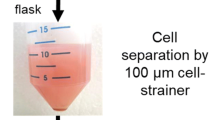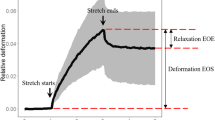Abstract
Cancer mortality is mostly related to metastasis. Metastasis is currently prognosed via histopathology, disease-statistics, or genetics; those are potentially inaccurate, not rapidly available and require known markers. We had developed a rapid (~ 2 h) mechanobiology-based approach to provide early prognosis of the clinical likelihood for metastasis. Specifically, invasive cell-subsets seeded on impenetrable, physiological-stiffness polyacrylamide gels forcefully indent the gels, while non-invasive/benign cells do not. The number of indenting cells and their attained depths, the mechanical invasiveness, accurately define the metastatic risk of tumors and cell-lines. Utilizing our experimental database, we compare the capacity of several machine learning models to predict the metastatic risk. Models underwent supervised training on individual experiments using classification from literature and commercial-sources for established cell-lines and clinical histopathology reports for tumor samples. We evaluated 2-class models, separating invasive/non-invasive (e.g. benign) samples, and obtained sensitivity and specificity of 0.92 and 1, respectively; this surpasses other works. We also introduce a novel approach, using 5-class models (i.e. normal, benign, cancer-metastatic-non/low/high) that provided average sensitivity and specificity of 0.69 and 0.91. Combining our rapid, mechanical invasiveness assay with machine learning classification can provide accurate and early prognosis of metastatic risk, to support choice of treatments and disease management.



Similar content being viewed by others
References
Albala, D., M. S. Manak, J. S. Varsanik, H. H. Rashid, V. Mouraviev, S. M. Zappala, E. Ette, N. Kella, K. M. Rieger-Christ, G. R. Sant, and A. C. Chander. Clinical proof-of-concept of a novel platform utilizing biopsy-derived live single cells, phenotypic biomarkers, and machine learning toward a precision risk stratification test for prostate cancer grade groups 1 and 2 (Gleason 3 + 3 and 3 + 4). Urology 124:198–206, 2019.
Alvarez-Elizondo, M. B., and D. Weihs. Cell-gel mechanical interactions as an approach to rapidly and quantitatively reveal invasive subpopulations of metastatic cancer cells. Tissue Eng. Part C Methods 23:180–187, 2017.
Bur, A. M., A. Holcomb, S. Goodwin, J. Woodroof, O. Karadaghy, Y. Shnayder, K. Kakarala, J. Brant, and M. Shew. Machine learning to predict occult nodal metastasis in early oral squamous cell carcinoma. Oral Oncol. 92:20–25, 2019.
Cross, S. E., Y. S. Jin, J. Rao, and J. K. Gimzewski. Nanomechanical analysis of cells from cancer patients. Nat. Nanotechnol. 2:780–783, 2007.
Dvir, L., R. Nissim, M. B. Alvarez-Elizondo, and D. Weihs. Quantitative measures to reveal coordinated cytoskeleton-nucleus reorganization during in vitro invasion of cancer cells. New J. Phys. 17:043010, 2015.
Friedl, P., and K. Wolf. Plasticity of cell migration: a multiscale tuning model. J. Cell Biol. 188:11–19, 2010.
Fu, B., P. Liu, J. Lin, L. Deng, K. Hu, and H. Zheng. Predicting invasive disease-free survival for early stage breast cancer patients using follow-up clinical data. IEEE Trans. Biomed. Eng. 66:2053–2064, 2019.
Gal, N., D. Lechtman-Goldstein, and D. Weihs. Particle tracking in living cells: a review of the mean square displacement method and beyond. Rheol. Acta 52:425–443, 2013.
Garcea, G., C. P. Neal, C. J. Pattenden, W. P. Steward, and D. P. Berry. Molecular prognostic markers in pancreatic cancer: a systematic review. Eur. J. Cancer 41:2213–2236, 2005.
Giuliano, A. E., K. V. Ballman, L. McCall, P. D. Beitsch, M. B. Brennan, P. R. Kelemen, D. W. Ollila, N. M. Hansen, P. W. Whitworth, P. W. Blumencranz, A. M. Leitch, S. Saha, K. K. Hunt, and M. Morrow. Effect of axillary dissection vs no axillary dissection on 10-year overall survival among women with invasive breast cancer and sentinel node metastasis: the ACOSOG Z0011 (Alliance) randomized clinical trial. JAMA J. Am. Med. Assoc. 318:918–926, 2017.
Guck, J., S. Schinkinger, B. Lincoln, F. Wottawah, S. Ebert, M. Romeyke, D. Lenz, H. M. Erickson, R. Ananthakrishnan, D. Mitchell, J. Kas, S. Ulvick, and C. Bilby. Optical deformability as an inherent cell marker for testing malignant transformation and metastatic competence. Biophys. J. 88:3689–3698, 2005.
Katz, S. J., and M. Morrow. Addressing overtreatment in breast cancer. Cancer 119:3584–3588, 2013.
Kraning-Rush, C. M., J. P. Califano, and C. A. Reinhart-King. Cellular traction stresses increase with increasing metastatic potential. PLoS ONE 7:e32572, 2012.
Kristal-Muscal, R., L. Dvir, and D. Weihs. Metastatic cancer cells tenaciously indent impenetrable, soft substrates. New J. Phys. 15:035022, 2013.
Massalha, S., and D. Weihs. Metastatic breast cancer cells adhere strongly on varying stiffness substrates, initially without adjusting their morphology. Biomech. Model. Mechanobiol. 16:961–970, 2017.
Maulik, U., A. Mukhopadhyay, and D. Chakraborty. Gene-expression-based cancer subtypes prediction through feature selection and transductive SVM. IEEE Trans. Biomed. Eng. 60:1111–1117, 2013.
McGuire, William L. G. M. C. prognostic factors and treatment decisions in axillary-node-negative breast cancer. N. Engl. J. Med. 326:1756–1761, 1992.
Merkher, Y., Y. Horesh, Z. Abramov, G. Shleifer, O. Ben-Ishay, Y. Kluger, and D. Weihs. Rapid cancer diagnosis and early prognosis of metastatic risk based on mechanical invasiveness of sampled cells. Ann. Biomed. Eng. 2020. https://doi.org/10.1007/s10439-020-02547-4.
Merkher, Y., and D. Weihs. Proximity of metastatic cells enhances their mechanobiological invasiveness. Ann. Biomed. Eng. 45:1399–1406, 2017.
Molnar, B., F. Sipos, O. Galamb, and Z. Tulassay. Molecular detection of circulating cancer cells role in diagnosis, prognosis and follow-up of colon cancer patients. Dig. Dis. 21:320–325, 2003.
Nicolini, A., P. Ferrari, and M. J. Duffy. Prognostic and predictive biomarkers in breast cancer: past, present and future. Semin. Cancer Biol. 52:56–73, 2018.
Nicolò, C., C. Périer, M. Prague, C. Bellera, G. MacGrogan, O. Saut, and S. Benzekry. Machine learning and mechanistic modeling for prediction of metastatic relapse in early-stage breast cancer. JCO Clin. Cancer Inform. 4:259–274, 2020. https://doi.org/10.1200/cci.19.00133.
Osman, M. H. Predicting survival of pancreatic cancer using supervised machine learning. Ann. Oncol. 29:viii205–viii270, 2018.
Pedregosa, F., G. Varoquaux, A. Gramfort, V. Michel, B. Thirion, O. Grisel, M. Blondel, P. Prettenhofer, R. Weiss, V. Dubourg, J. Vanderplas, A. Passos, D. Cournapeau, M. Brucher, M. Perrot, and É. Duchesnay. Scikit-learn: machine learning in python. J. Mach. Learn. Res. 12:2825–2830, 2011.
Siegel, R. L., K. D. Miller, and A. Jemal. Cancer statistics, 2019. Cancer J. Clin. 69:7–34, 2019.
Smith, R. A., K. S. Andrews, D. Brooks, S. A. Fedewa, D. Manassaram-Baptiste, D. Saslow, O. W. Brawley, and R. C. Wender. Cancer screening in the United States, 2018: a review of current American Cancer Society guidelines and current issues in cancer screening. Cancer J. Clin. 68:297–316, 2018.
Su, P.-J., Y.-A. Fang, Y.-C. Chang, Y.-C. Kuo, and Y.-C. Lin. Establish a predictive model for high-risk de novo metastatic prostate cancer patients by machine learning. J. Glob. Oncol. 5:13–13, 2019.
Swaminathan, V., K. Mythreye, E. T. O’Brien, A. Berchuck, G. C. Blobe, and R. Superfine. Mechanical stiffness grades metastatic potential in patient tumor cells and in cancer cell lines. Cancer Res. 71:5075–5080, 2011.
Van Rossum, G., and F. L. Drake. Python 3 Reference Manual. Scotts Valley: CreateSpace, 2009.
Weigelt, B., J. L. Peterse, and L. J. van ’t Veer. Breast cancer metastasis: markers and models. Nat. Rev. Cancer 5:591–602, 2005.
Weihs, D., and Y. Merkher. A device and method for determining cell indention activity, Patent pending. Patent: PCT/IL2019/050463, 2019.
Welch, H. G., and W. C. Black. Overdiagnosis in cancer. JNCI J. Natl. Cancer Inst. 102:605–613, 2010.
Yankaskas, C. L., K. N. Thompson, C. D. Paul, M. I. Vitolo, P. Mistriotis, A. Mahendra, V. K. Bajpai, D. J. Shea, K. M. Manto, A. C. Chai, N. Varadarajan, A. Kontrogianni-Konstantopoulos, S. S. Martin, and K. Konstantopoulos. A microfluidic assay for the quantification of the metastatic propensity of breast cancer specimens. Nat. Biomed. Eng. 3:452–465, 2019.
Acknowledgments
The work was partially funded by the Israeli Ministry of Science and Technology (MOST) Medical Devices Program (Grant no. 3-17427), the Polak Fund for Applied Research, the Ber-Lehmsdorf Foundation, and the Gerald O. Mann Charitable Foundation.
Conflict of interest
The authors declare no conflicts of interest.
Author information
Authors and Affiliations
Corresponding author
Additional information
Associate Editor Joel Stitzel oversaw the review of this article.
Publisher's Note
Springer Nature remains neutral with regard to jurisdictional claims in published maps and institutional affiliations.
Supplementary information
Below is the link to the electronic supplementary material.
Rights and permissions
About this article
Cite this article
Rozen, R., Weihs, D. Machine-Learning Provides Patient-Specific Prediction of Metastatic Risk Based on Innovative, Mechanobiology Assay. Ann Biomed Eng 49, 1774–1783 (2021). https://doi.org/10.1007/s10439-020-02720-9
Received:
Accepted:
Published:
Issue Date:
DOI: https://doi.org/10.1007/s10439-020-02720-9




